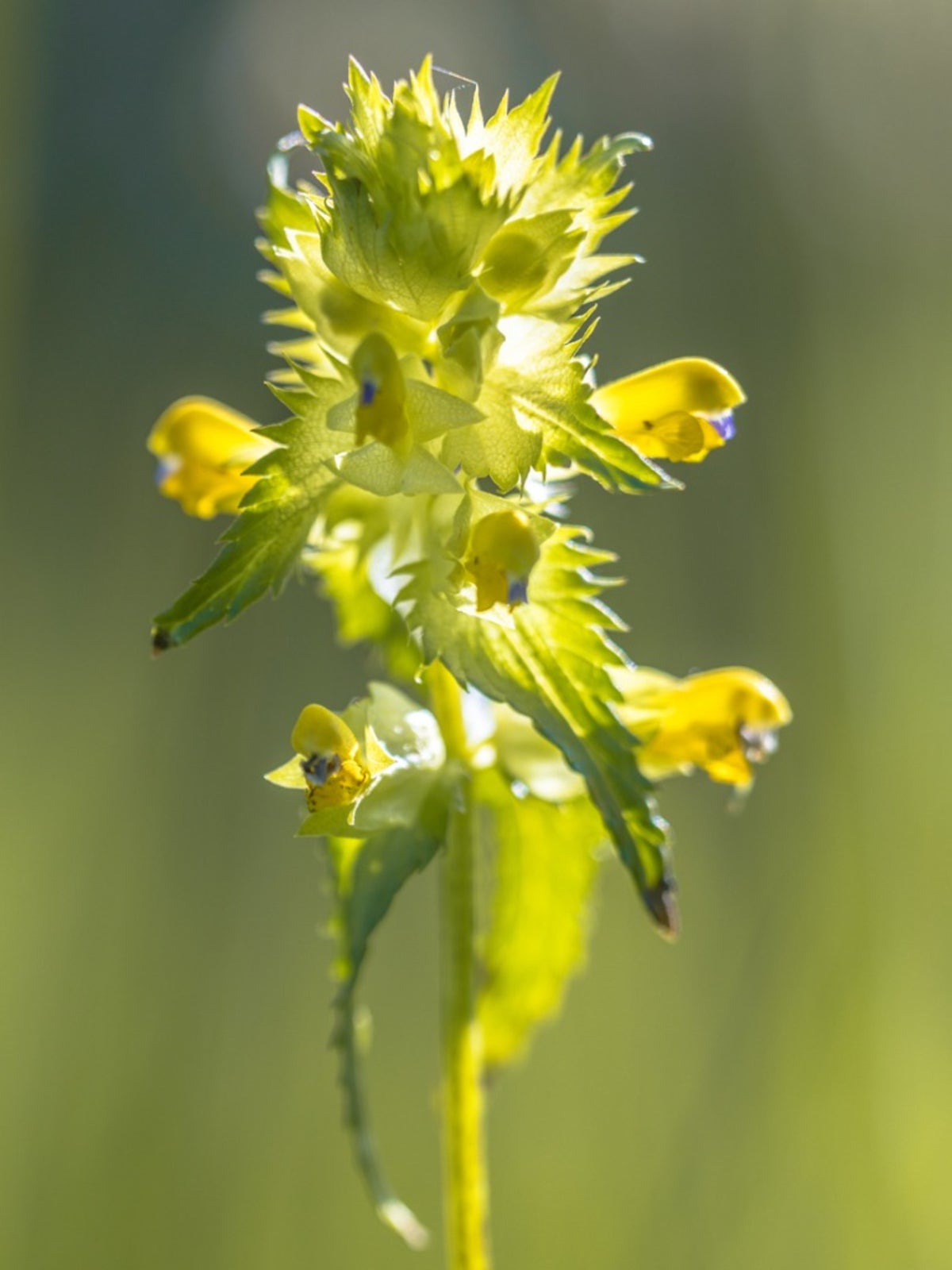Tips For Managing Yellow Rattle Plants In The Landscape


Yellow rattle plant (Rhinanthus minor) is an attractive wildflower that adds beauty to a naturalistic environment or a wildflower garden. However, the plant, also known as yellow rattle weed, spreads rapidly and can become highly invasive.
What are Yellow Rattle Plants?
Yellow rattle plants are semi-parasitic weeds that survive by drawing nitrogen and other nutrients from nearby plants. The plant thrives in sunny, open locations.
Although this plant attempts to tap into the roots of any nearby plant, it tends to parasitize grasses more than any other plant. Yellow rattle is especially problematic in hay and grass fields.
What Does Yellow Rattle Look Like?
Yellow rattle plants are recognized by the serrated, dark-veined leaves and its stems, which are marked with black spots. Bright yellow, tube-shaped blooms appear from late spring until autumn.
Yellow Rattle Control
Yellow rattle is an annual plant that blooms in summer and goes to seed in autumn. The seeds, which have lain dormant throughout the winter, germinate in spring.
The best way to manage yellow rattle is to mow or pull the plant before it blooms. If the plant blooms, mow it well before the flowers go to seed. Once the plant drops its seeds on the soil, it becomes very difficult to control.
Although herbicides aren't recommended in the home garden, you may be able to kill yellow rattle by spraying the plant carefully with an organic product. However, getting rid of the plant may require several repeat applications. Read labels carefully before you begin. Spray the plant on a day with no wind.
Gardening tips, videos, info and more delivered right to your inbox!
Sign up for the Gardening Know How newsletter today and receive a free copy of our e-book "How to Grow Delicious Tomatoes".
If you accidentally spray nearby garden plants, rinse the spray from the plant immediately. Never spray near ponds, drainage ditches, or other bodies of water in case the product is toxic to frogs and other amphibians. Always store herbicides, even when organic, safely out of reach of children and pets.
Note: Chemical control should only be used as a last resort. Organic approaches are safer and much more environmentally friendly.

A Credentialed Garden Writer, Mary H. Dyer was with Gardening Know How in the very beginning, publishing articles as early as 2007.
-
 Looking For Plants To Give You The Soft And Fuzzies? Try These 5 Fuzzy Leaf Plant Options
Looking For Plants To Give You The Soft And Fuzzies? Try These 5 Fuzzy Leaf Plant OptionsLovers of texture, drama, silver foliage and tactile plants will adore these special sensory garden additions. These fuzzy leaf plant options will leave you all aglow
By Susan Albert
-
 Get Ready For A Summer Of Hummers! Grow These Full Sun Hummingbird Plants and Flowers
Get Ready For A Summer Of Hummers! Grow These Full Sun Hummingbird Plants and FlowersIf you’re lucky enough to enjoy a sunny backyard, make sure you are maxing out on your pollinator opportunities and grow these full sun hummingbird plants and flowers
By Tonya Barnett